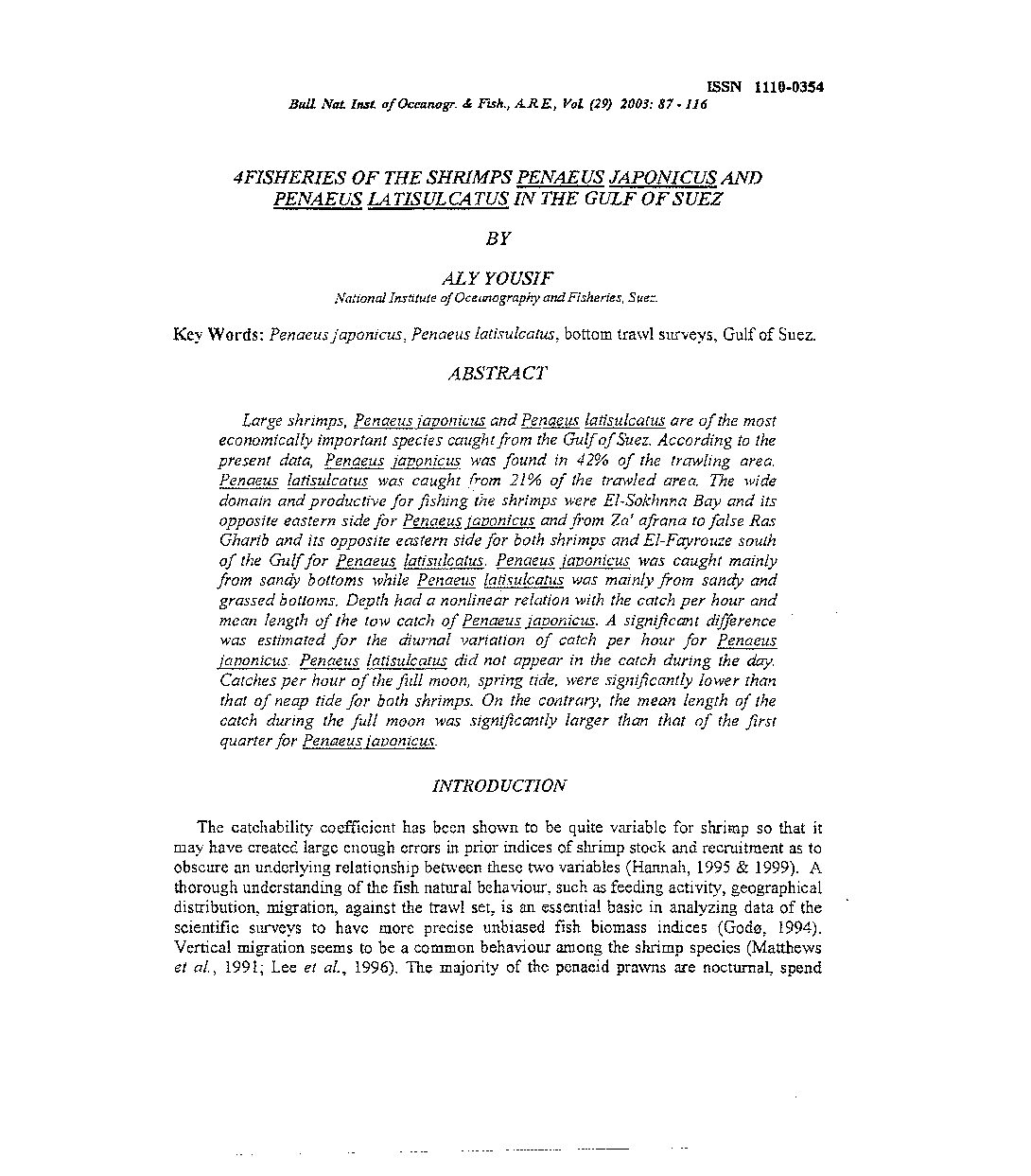Categories
vol-29STUDY OF MOLLUSCAN SHELLS AND THEIR ENCLOSED BOTTOM
SEDIMENTS IN MANZAL4 LAGOON, NILE DELTA, EGYPT
BY
MAHMOUD H. AHMED*AND ABDEL AAL A. ELM **
*National Authorityfor Remote Sensing and Space Sciences, P.O. Box 1564. AlfMaskan. Cairo
**Geology Department. Faculty ofSciences. Alexandria University
ABSTRACT
Manzala lagoon is in grave danger of suffering irrecoverable loss of
ecosystem quality, largely as a result of over-exploitation and land-use
changes and modifications to catchments hydrology. Knowledge of the
environmental processes involved. in regulating these lagoonal systems
together with an understanding ofhow Manzala lagoon interact can make
a valuable contribution to management and to the development offuture
mitigation strategies. In order to make a constructive contribution to
future management plans and policies, several essential lines of research
need to be instigated particularly microfaunal study.
The Present study deals with the study of bottom sediments and
molluscan shells in Manzala Lagoon. This study revealed that the Manzala
Lagoon sediments show a general coarsening trend at .the northern side
and the western corners of the Lagoon; this is due to the movement of
terrestrial materials of sand from sea toward the lagoon. The general
picture of the bottom fauna is the empty shells of mollusca. Most of the.
molluscs are of marine origin, which are derived to the lagoon from the
Mediterranean Sea. The fresh water molluscs invaded the lagoon from the
southern drains. The shell wall structure ofmolluscan shells revealed that
the composite prismatic structure characterizes class Gastropoda, while
the foliated and cross foliated structure characterize class Bivalvia.







